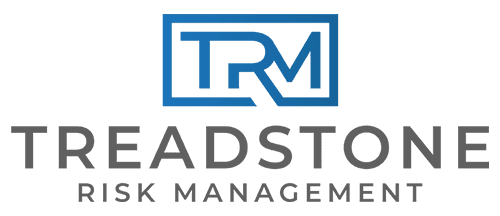Insurance programs come in many colors, shapes, and forms. Many employers can be overwhelmed with complex commercial insurance solutions and program designs. However, many times it is a good idea to at least kick the tires on some alternative insurance options. This article is dedicated to demystifying a handful of the potential structures and traditional insurance alternatives that are popular in the market place.
Traditional Insurance or Fixed Cost Insurance:


- You know the total cost of your insurance for the coverage period
- No large out-of-pocket costs for covered claims
- All services and support provided by the insurance company

- Higher up-front cost than the other options
- If you don’t have any claims, you don’t get any money back (exception in the case of mutual insurers that give you a small dividend if all of the similar policy holders don’t have too many claims)
- No control over how claims are taken care of or choice in service providers that the insurer provides
Check Out Best Practices for Implementing Alternative Insurance Solutions
Large Deductible/Retention Programs
These insurance programs are similar to Traditional/Fixed Cost Insurance except that the insurers offer a lower up-front cost as a trade-off for higher out-of-pocket costs for each covered claim. For instance, a Fixed Cost Property Policy might have a $1,000 or $2,500 per claim deductible. A Large Deductible Policy might have a $5,000 to $100,000 per claim deductible. As is the case with Fixed Cost Insurance, the insurer still handles all of the claims and supporting service professionals.

- Lower up-front cost
- Lower total cost if you have no or very few, costly claims
- Range of Deductible/Retention options

- Higher total cost if you have several costly claims or one very large claim
- Insurer still holds onto the up-front premiums paid if no covered claims occur
- No or very little control over how claims are taken care of or choice in service providers that the insurer provides
Self-Insurance and Hybrid-Insurance Programs
Self-Insurance refers to an organization paying for all of its’ own losses out-of-pocket. For example, if the total cost of all Workers’ Compensation claims during a year is $1,000,000, the employer pays the whole cost from its’ cash holdings or funds it borrows. Hybrid-Insurance Programs are like Self-Insurance except an excess or umbrella policy is purchased to protect against catastrophic claims or many expensive claims. Given the previous example, if the employer purchased an Excess Workers’ Compensation Policy to protect it against any claim over $250,000, then no single covered claim would cost the employer more than $250,000. If a single claim was worth $1,000,000, the employer would’ve paid $250,000 and the Excess Workers’ Compensation insurer would’ve paid $750,000. In these types of programs, the insured typically contracts with the support professionals such as defense attorneys, claims administrators, safety and loss control consultants, risk management consultants, etc.

- Very low up-front insurance costs
- Almost total control over how the program is administered and which professionals are employed to help in structuring and monitoring it
- Lowest total program cost for the year if no or very few claims occur
- Frees up cash for the insured to use for its’ daily operations or to invest
- Compels the insured to be vigilant about risk management and claims controls

- Requires a lot of preliminary work to setup – hiring professionals, setting up accounts, state filings, etc.
- Highest total program cost if many costly claims or a few catastrophic claims occur
- Large budgetary shock if the insured needs to go back to a Fixed Cost or another type of insurance program
Risk Purchasing Pools & Joint Insurance Funds
Risk Purchasing Pools & Joint Insurance Funds are cooperative groups of similar types of organizations that join together to pool funds to pay for claims and purchase insurance. These types of programs typically take the form of a Hybrid-Insurance Program where the insured is multiple insureds. These programs contract and Administrator that oversees much of the operation of the program such as hiring professionals, purchasing excess insurance, filing documents with the various regulatory bodies, etc. These programs become very popular during ‘Hard Markets’ when insurance becomes very costly or unavailable.

- Very low up-front insurance costs
- Lowest total program cost for the year if no or very few claims occur
- Frees up cash for the insured to use for its’ daily operations or to invest
- Compels the insured to be vigilant about risk management and claims controls
- Smooths out year-over-year changes in cost when members are strategically chosen so that a single member’s large loss is subsidized by the other members’ positive performance

- Requires a lot of preliminary work to setup – coordinating with founding members, picking an administrator, hiring professionals, setting up accounts, state filings, etc.
- Incomplete control as many of these programs are governed by member voting
- Large budgetary shock if the insured needs to go back to a Fixed Cost or another type of insurance program
Layered Insurance Solutions

Peer-to-Peer Insurance

Download Our Alternative Insurance Solutions Frequently Asked Questions Guide

